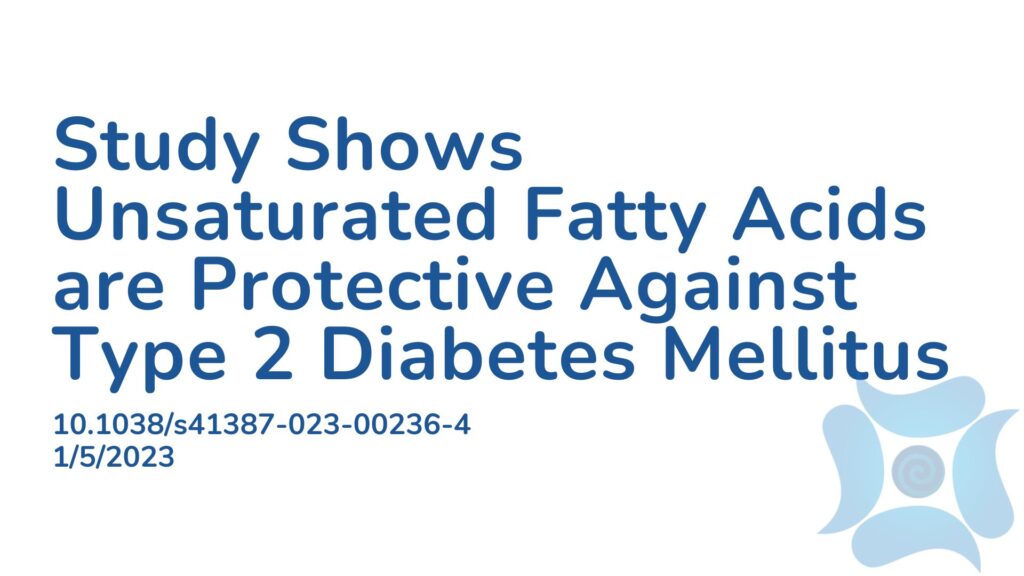Summary:
Type 2 diabetes mellitus (T2DM) is a serious public health concern that is predicted to increase by more than 100 million cases in the next decade. Genetics, lifestyle and dietary behaviours are all implicated in the development of T2DM. Dietary fat has also been implicated in T2DM as fatty acids play a large role in regulating insulin sensitivity, however understanding specific types of fatty acids and whether they are risk or protective factors remains controversial. The aim of this study was to determine the role of dietary fatty acids in impaired glucose tolerance and T2DM. After adjusting for age, sex, ethnicity, educational level, socio-economic status, body mass index, hypertension, physical activity and smoking, the association between fatty acid intake and the risk of impaired glucose tolerance and T2DM were assessed. The results showed that there is a negative association between saturated fat and risk of impaired glucose tolerance, meaning as saturated fat intake increases, risk of impaired glucose tolerance decreases. A negative correlation was also observed between total fatty acid consumption and T2DM with many different types of unsaturated fats containing high amounts of natural oils such as fatty acids from avocados and nuts showing benefits. The authors therefore concluded that several unsaturated fatty acids with high proportions in natural oils may reduce the risk of T2DM.
Abstract:
Background: Fatty acids (FAs) play a major role in regulating insulin sensitivity. However, owing to dietary quantitative tools, it has been challenging to study the dietary FAs in previous studies. There is a lack of knowledge regarding the associations between dietary FAs and the risk of impaired glucose tolerance (IGT) and type 2 diabetes mellitus (T2DM). Methods: Dietary FAs, adjustment of variables including age, sex, race, educational level, poverty to income ratio, body mass index, smoking, hypertension, physical activity, and diabetes data were extracted from the National Health and Nutrition Examination Survey 2005–2016. A multivariate logistic regression model was used to determine the associations between FA intake and the risk of IGT and T2DM. Results: This serial cross-sectional study included 9082 samples. After adjusting all the variables, a negative correlation was observed between total saturated FA and the risk of IGT (OR = 0.991, 95% (CI): 0.985–0.998, P = 0.024). Total FA at quintile 4 was negatively correlated with T2DM (OR = 0.714, 95% CI: 0.532–0.959, P = 0.025) compared with quintile 1. Factor analysis identified four factors of which F4 was negatively associated with the risk of T2DM (OR = 0.824, 95% CI: 0.715–0.949, P = 0.029). Based on this factor, we identified an unsaturated FA signature (n = 4 FAs, including octadecenoic acid (18:1), octadecadienoic acid (18:2), octadecatrienoic acid (18:3), and eicosenoic acid (20:1)). Conclusions: Several unsaturated FAs with high proportions in natural oils may reduce the risk of T2DM.
Article Publication Date: 1/5/2023
DOI: 10.1038/s41387-023-00236-4




